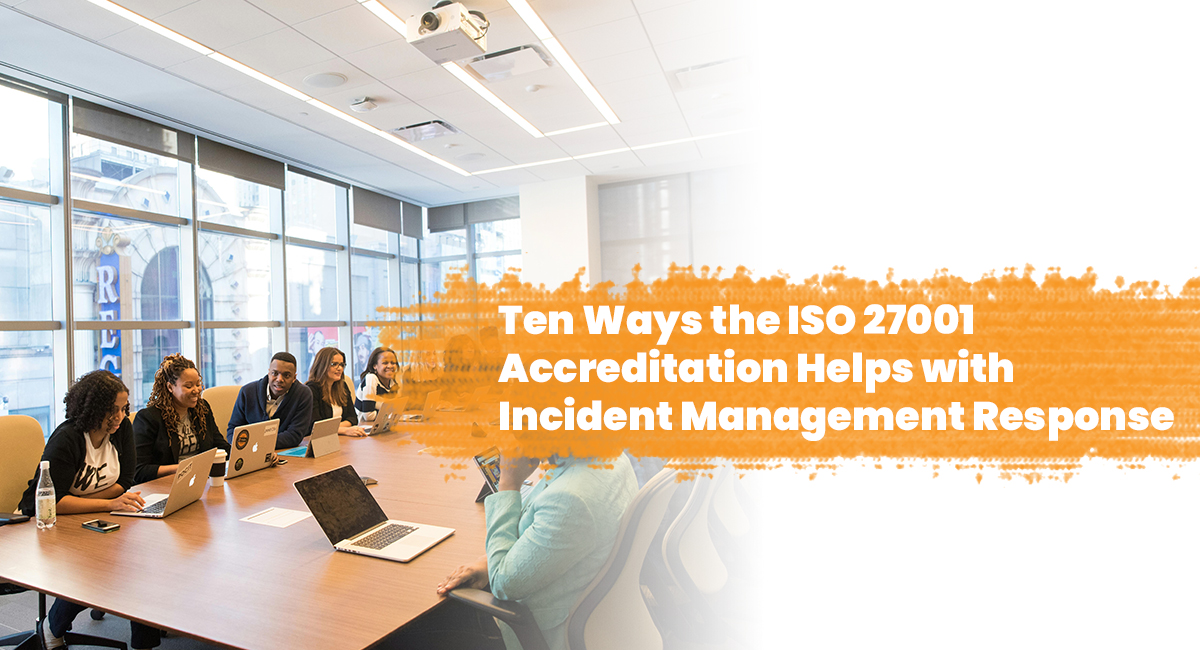
Companies need the ISO 27001 accreditation to maintain tight security over their organisation’s information. Data is sensitive and prone to third-party manipulation, which is why business enterprises often pay hefty penalties for violating these regulations. The ISO 27001 is an international benchmark for information safety. It provides relevant and applicable guidelines and procedures for identifying, assessing, and mitigating risks associated with data safety.
With an increasing globalisation and technical evolution, companies regardless of their size and type are subject to cyberbullying. This includes social engineering, phishing, data breach thefts, and many more. Therefore, a company may have to pay large financial penalties to pay the government for violations but also go through countless harassments. A company may lose its brand and the loyalty of its workforce and target customers.
Incident management is the most required course of action for dealing with a variety of information security-related threats. An information security management global system is a mandatory requirement for small and medium-sized companies as they are understandably more vulnerable. The following blog will outline how the ISO 27001 helps with implementing incident management responses.
Ten ways ISO 27001 accreditation helps with incident management response
1.Creating an incident response plan – The ISO 27001 provides easy-to-apply protocols for designing and establishing an incident response management plan. Your management must provide clear direction for implementing all procedures when responding to risky incidents. The process includes a detection, aggregation, and mitigation plan so that each incident is avoided with swift measures.
2.Establishing responsibilities – The standard states that you must definite all roles and responsibilities related to incident management. This ensures that individuals and teams clearly understand their roles during an incident, facilitating a coordinated and effective response.
3.Protocols for transparent communication – The ISO 27001 emphasizes the importance of effective communication during incidents. The standard requires the development of communication protocols to ensure timely and accurate communication both within an organization and, if necessary, with external parties. Therefore, the management team must understand and installs relevant channels and use proper resources for sharing ideas and opinions.
4.Awareness and training programs – For effective incident response management, companies require a proactive workforce and management team who are aware of all problems. The ISO 27001 alerts the management team about the requirement for training. Accordingly, the authoritative body will organise programs and workshops to increase knowledge and efficiency levels of all internal stakeholders.
5.Documentation – The standard encourages the documentation of incidents, including their nature, impact, and resolution. Proper documentation helps in analysing incidents, learns from each of them, and looking to improve your incident response process over time. Also, maintaining records help with contingency planning.
6.Classification and categorisation of the incidents – As mentioned above, it is necessary to detect all risk factors and aggregate them so that your management team can plan properly and mobilise relevant resources. The standard encourages organizations to classify and categorize incidents based on their severity and impact. This helps in prioritizing responses and allocating resources effectively, especially in situations where multiple incidents occur simultaneously.
7.Legal and Regulatory Compliance – The ISO 27001 emphasizes compliance to all legal and regulatory requirements. An effective incident response program ensures that an organization complies with reporting obligations and other legal requirements related to information security incidents.
8.Analysing the root cause – Another main feature of the ISO 27001 standard is that it helps with root-cause analysis. For an effective response, an incident must be assessed. The root causes and probable dangers are listed with the help of guidelines provided by your information security management benchmark.
9.Testing – After designing all procedures for incident response management, the ISO 27001 that your management team must ensure efficiency by conducting testing programs.
10.Continuous Improvement – The ISO 27001 promotes a culture of continuous improvement. Organizations are required to regularly review and update their incident response processes based on lessons learned from past incidents and changes in the information security landscape.
To find the right professional support for implementing the requirements of the ISO 27001 accreditation and all relevant assessments, contact us at Compliancehelp. We are a premier site for achieving any ISO certifications within Australia. Our customized solutions for ISO and other global certifications are ready to make the seemingly exhausting process of accreditation, comfortable and seamless. From basic consultation to audit and analysis, we cover everything. Get help in clearing up any misconceptions or questions or regarding the clauses of any management system standard you require as our process leads to seamless certification!

Get connected with us on social networks!